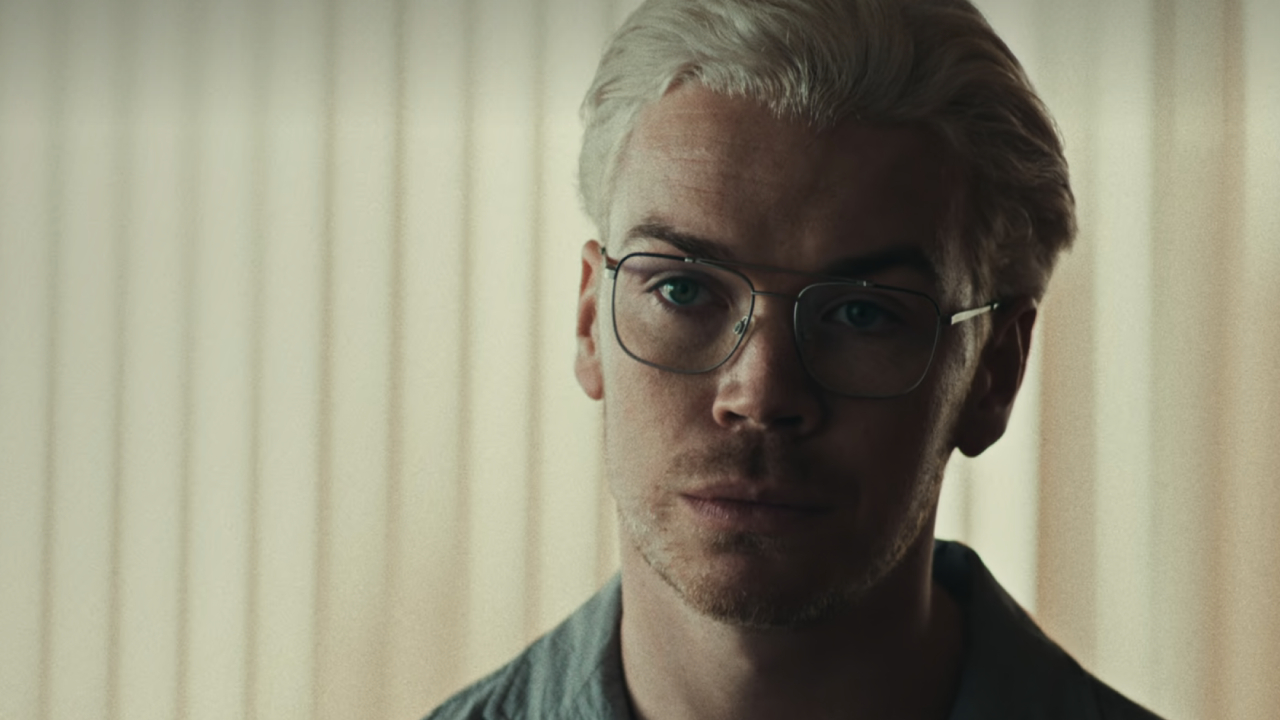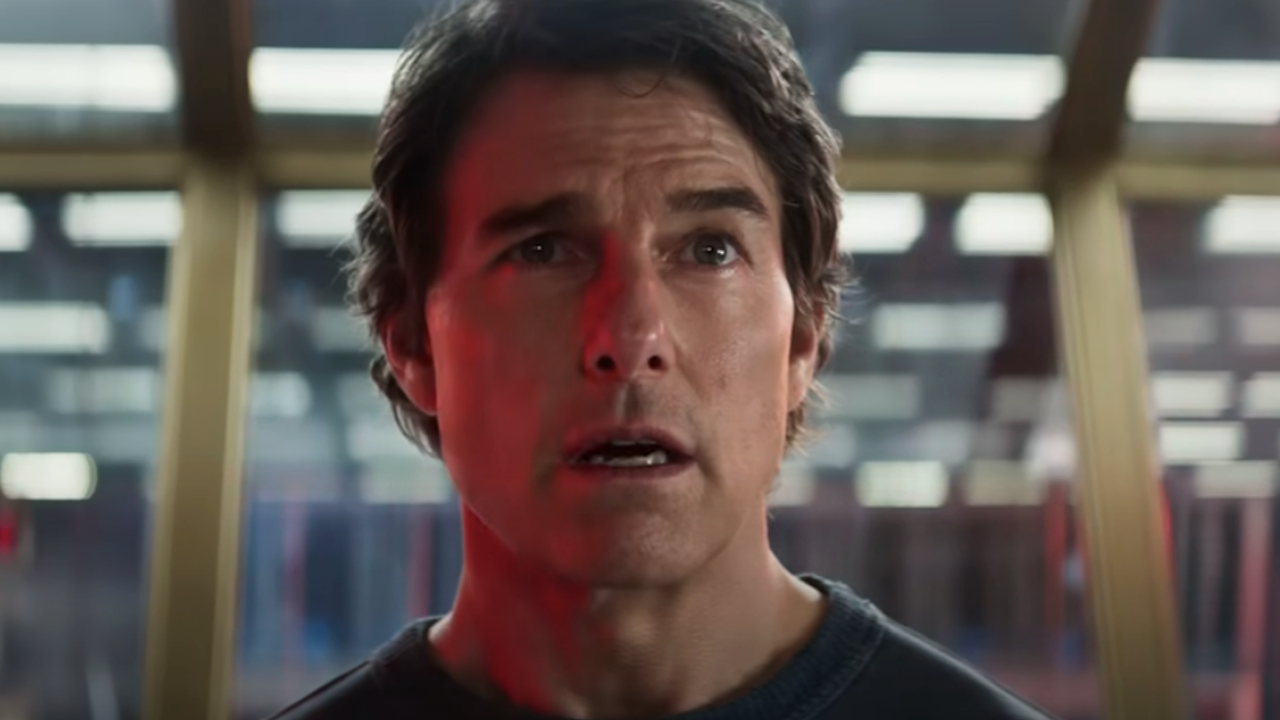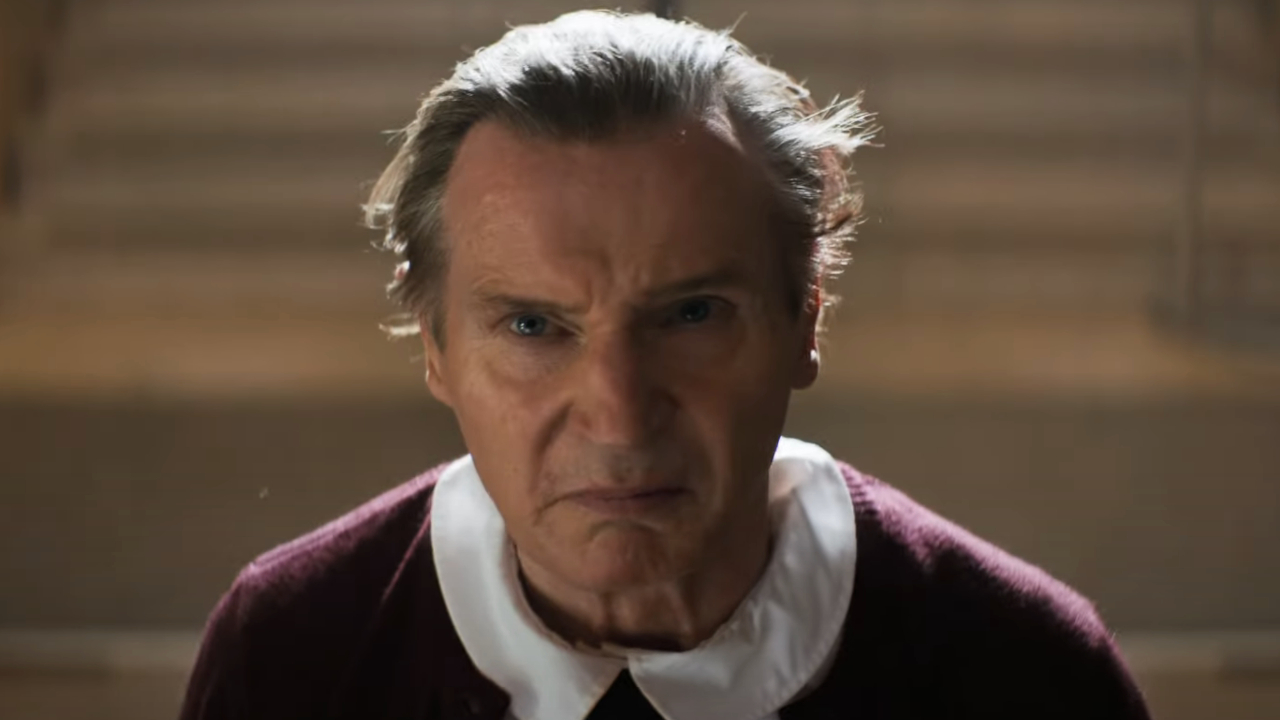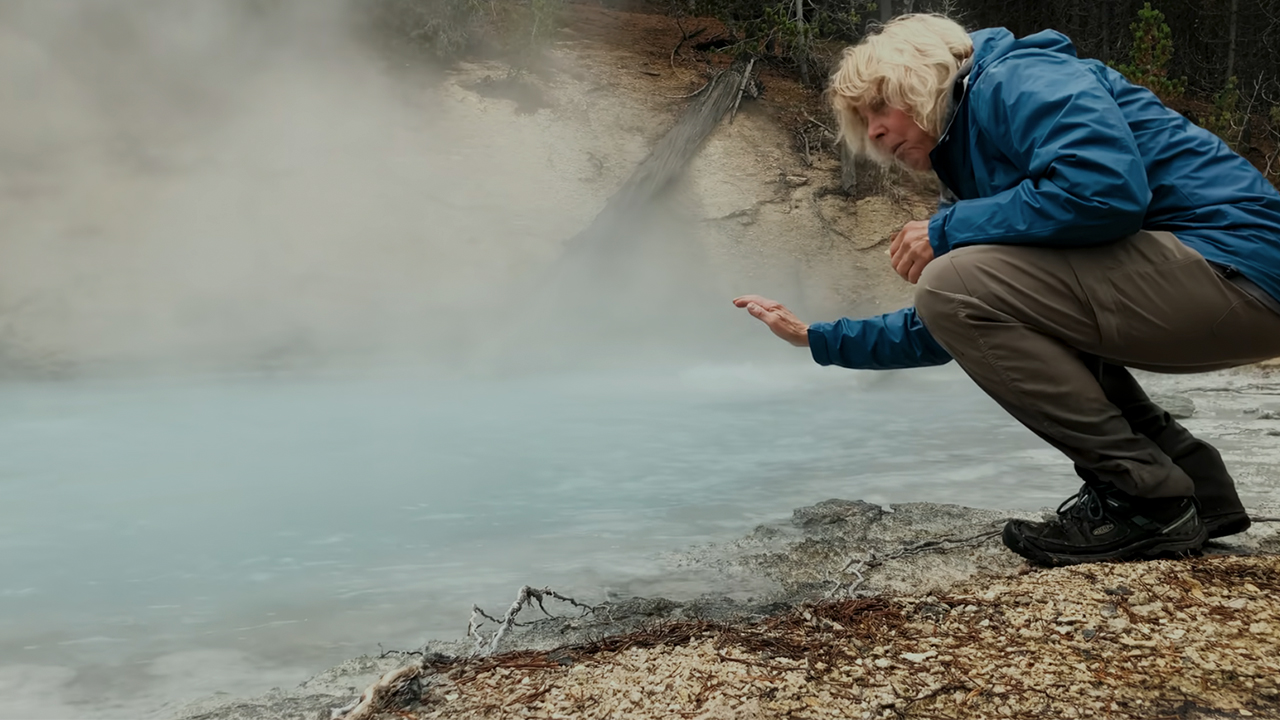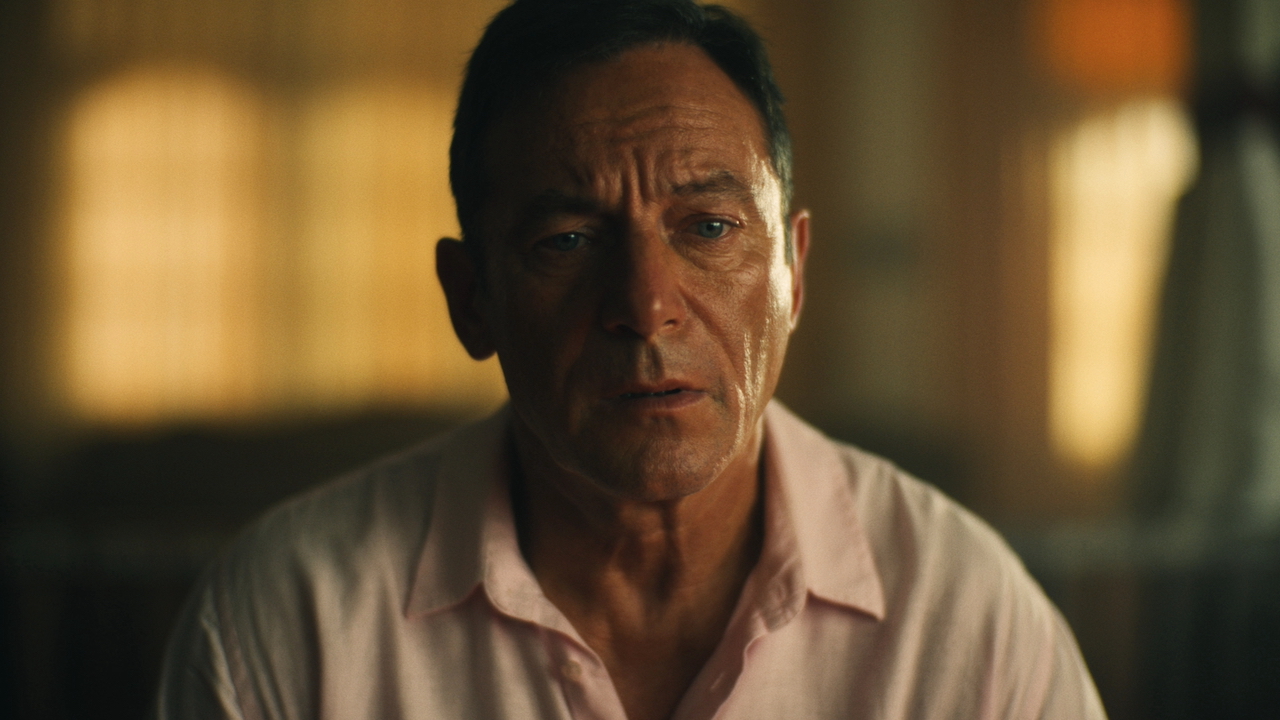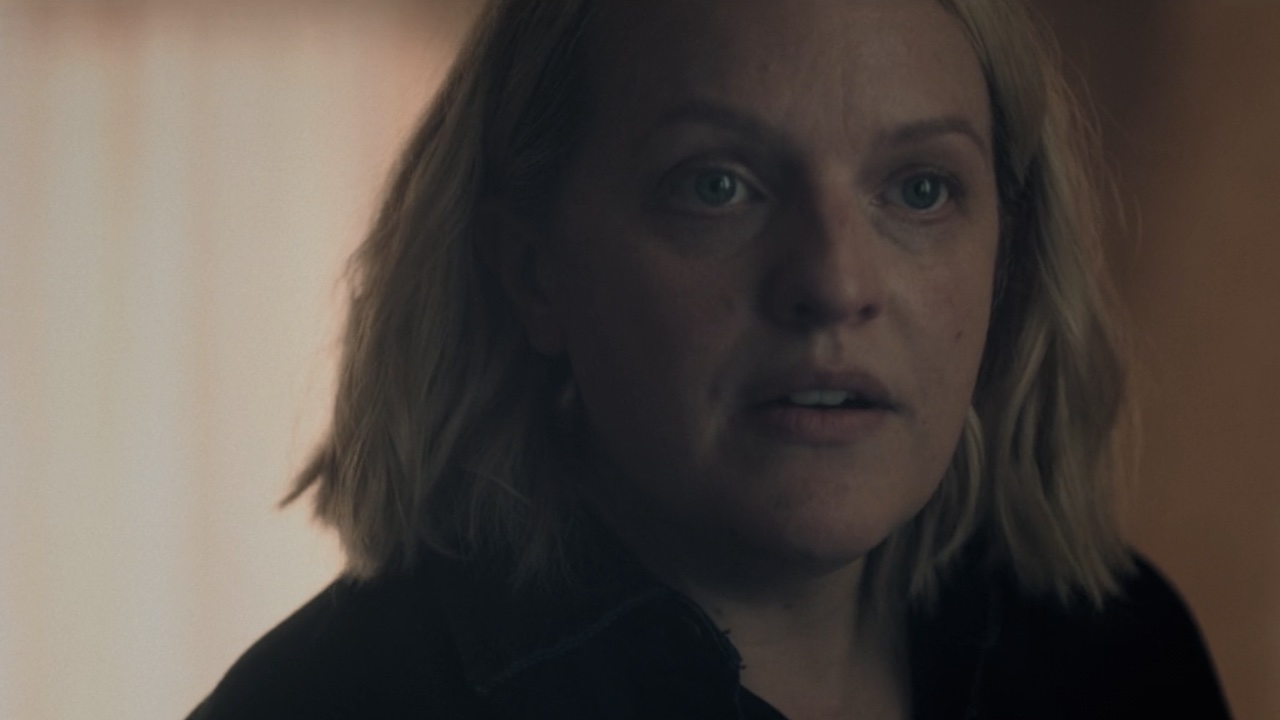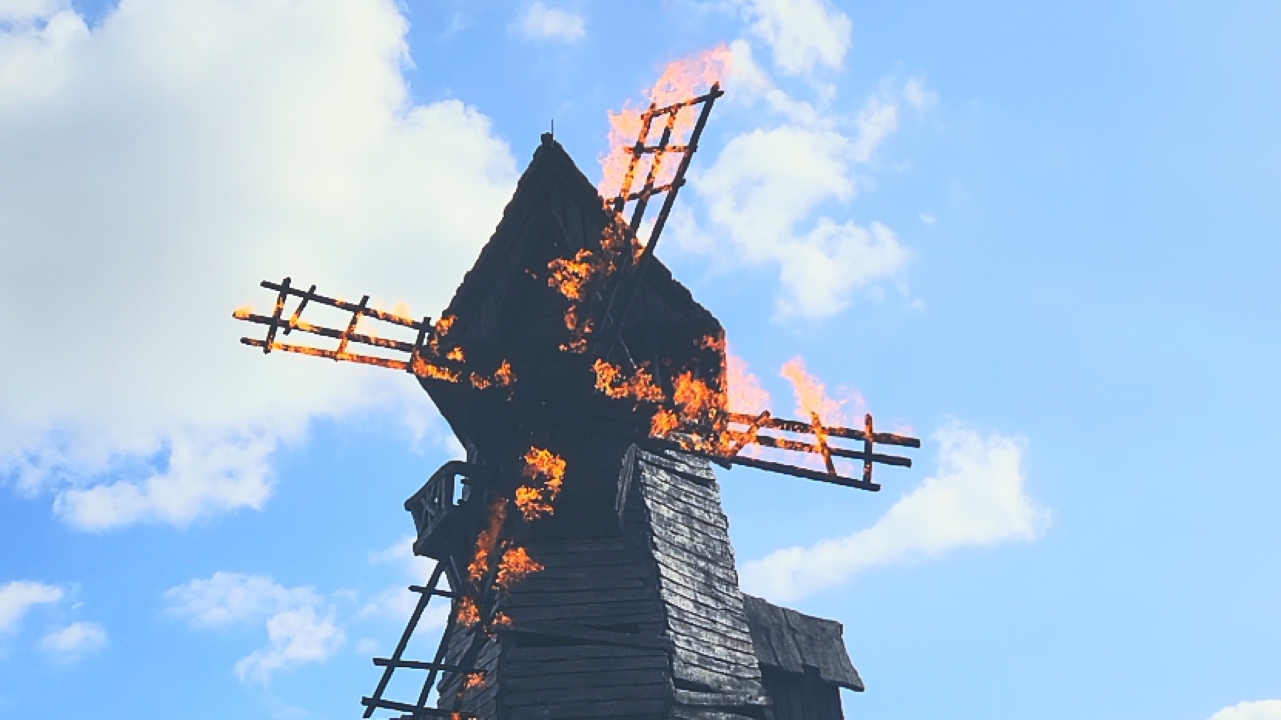Beetlejuice: 10 Behind-The-Scenes Facts About The Michael Keaton Movie
It's showtime!
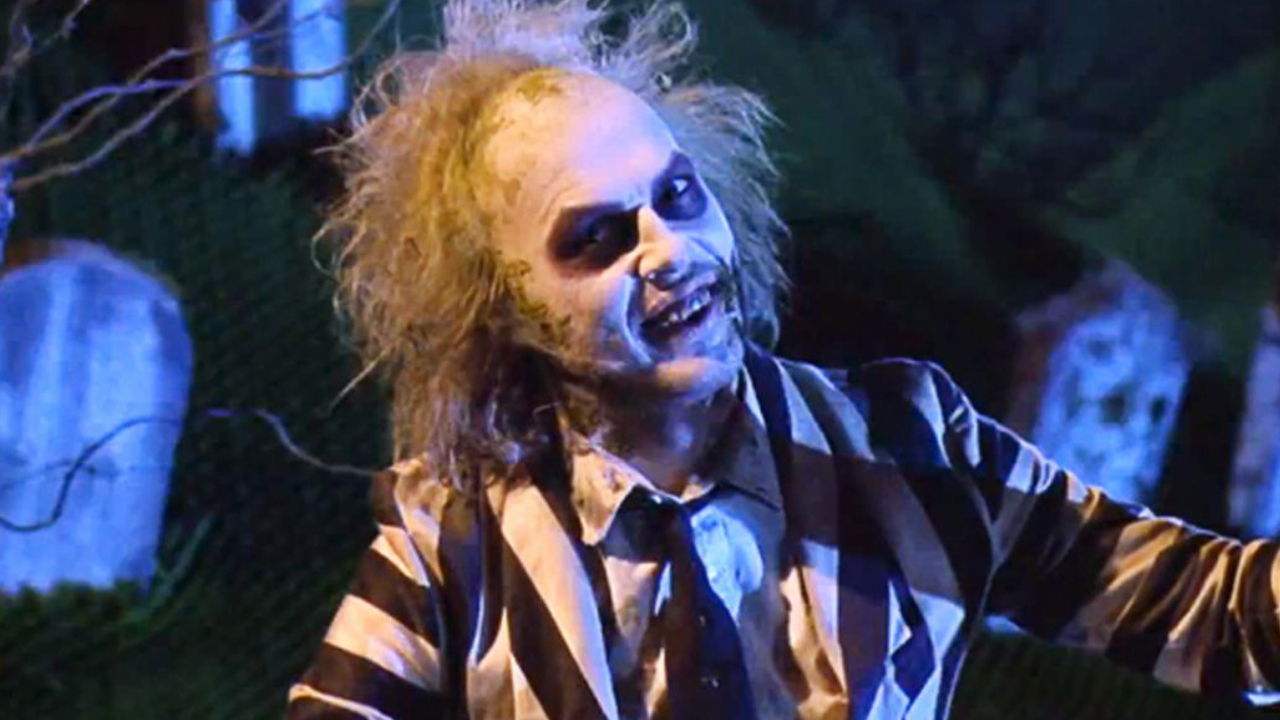
More than 30 years since we were first introduced to “the ghost with the most” in 1988’s Beetlejuice, fans still revel in saying his name three times and revisiting the bizarre, hilarious exploration of the afterlife, either during the Halloween season or any time of the year. Director Tim Burton’s sophomore feature-length effort sees Academy Award nominee Michael Keaton at his kookiest, creepiest, and most unrecognizable in the (sort of) title role of a self-described bio-exorcist whom the recently deceased Adam (Alec Baldwin) and Barbara Maitland (Geena Davis) mistakenly believe will help them rid their home of a snobbish family.
This clever reversal of the haunted house movie formula is brimming with so much macabre imagination, you must be dying to know what it was like to make it, which we shall reveal with the following behind the scenes facts, starting with a glimpse at the movie it could have been.
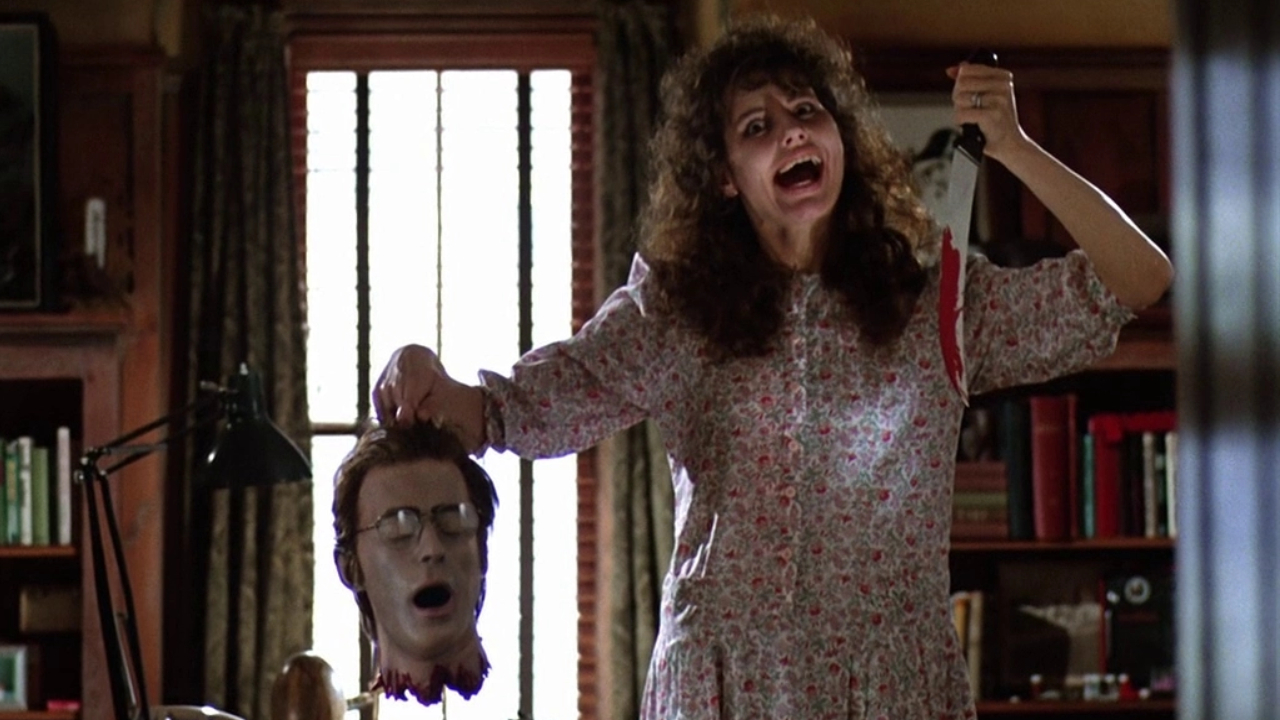
Beetlejuice Was First Written As An Earnest Horror Thriller
I feel I made a pretty good case earlier for why Beetlejuice is remembered as one of the most beloved horror-comedy movies and how its surrealist approach to that genre crossover is key to its enduring iconography. Yet, the movie might have had far less laughs if Warner Bros. settled on co-writer Michael McDowell’s original vision for a more straightforward scary movie in which, according to Consequence, the title character was a murderous, shape-shifting winged demon who takes human form as a small Middle Eastern man.
If there is one reason to be glad that famed script doctor Warren Skaaren was brought in to lighten up the material, it is what the main antagonist would become instead.
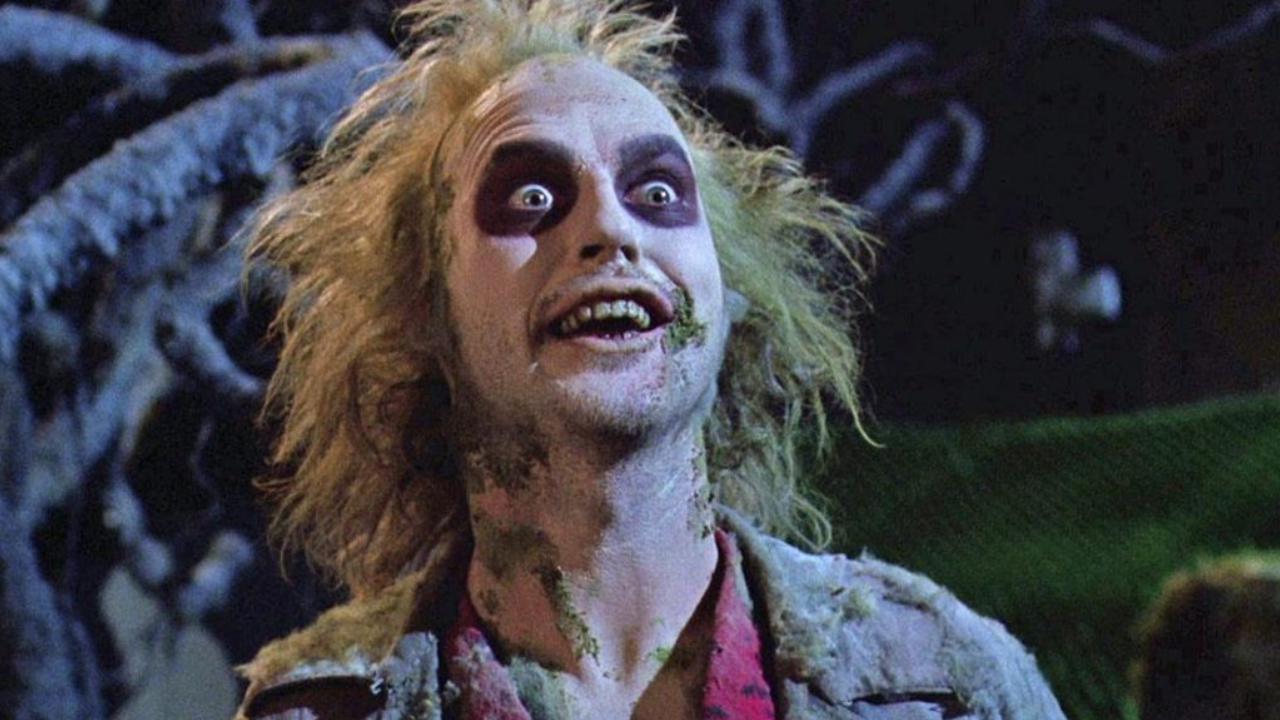
Michael Keaton Contributed A Lot To His Iconic Appearance In Beetlejuice
Of all the great Michael Keaton performances I could choose as a favorite (such as his time as Batman or his Oscar-nominated role in 2014’s Birdman), it still has to be the manic brilliance he displays in Beetlejuice. As the actor recalled to Charlie Rose during a 2014 interview, he actually had a lot to do with the creation of Betelgeuse (as his name is actually spelled in the film).
After Tim Burton described the character as existing “in all times and all spaces,” Keaton had the idea to give Betelgeuse an eclectic wardrobe, hair like he “stuck [his] finger in an electrical outlet,” rotten teeth, and mold all around his face to really sell him as an ancient, grizzled entity - which might have been much different from what Burton’s original choice could have looked like.
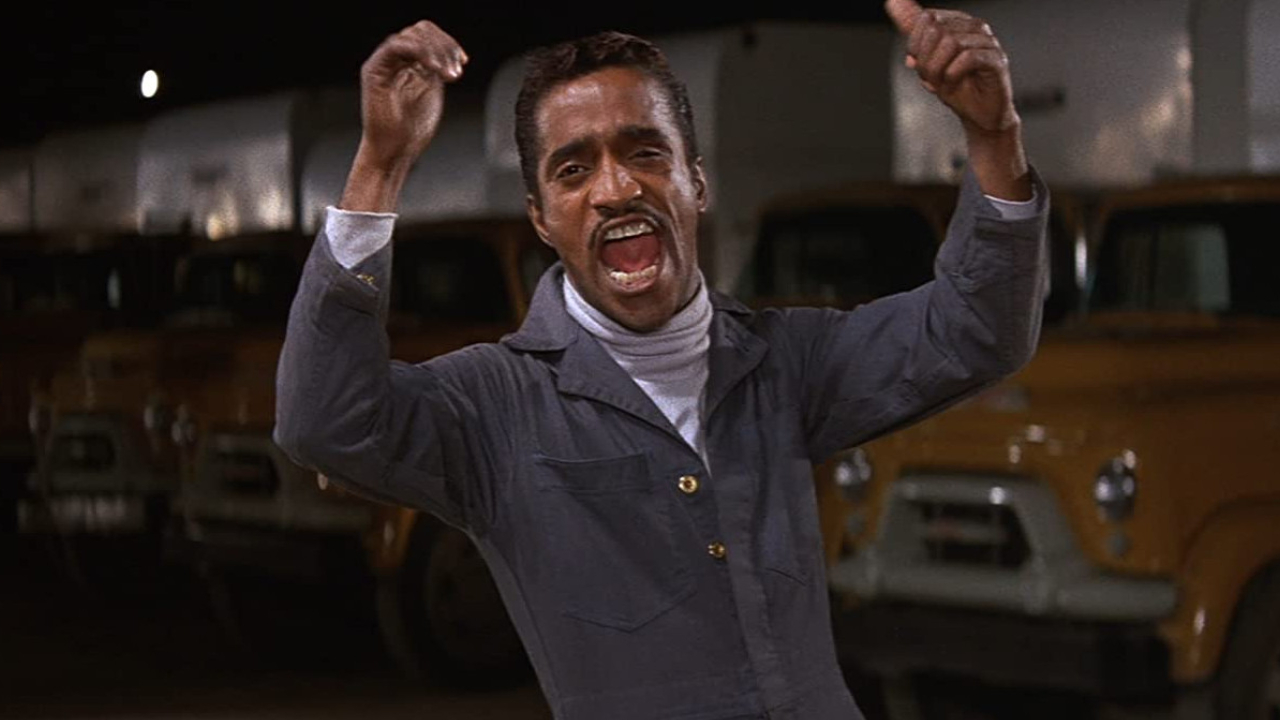
Tim Burton Wanted Sammie Davis Jr. To Play The Villain Of Beetlejuice
Anyone familiar with the controversial reception to 1992’s Batman Returns knows that Tim Burton is no stranger to receiving some pushback from his distributors, and Beetlejuice was apparently no exception. For instance, while appearing on NBC’s Late Night in 1999 to promote Sleepy Hollow, the director said the producers reacted like a “deer caught in the headlights” when he recommended legendary Rat Pack member Sammie Davis Jr. for Betelgeuse - an idea host Conan O’Brien was actually amused by. That would not be the only time during the making of Beetlejuice when he came at odds with the studio.
CINEMABLEND NEWSLETTER
Your Daily Blend of Entertainment News
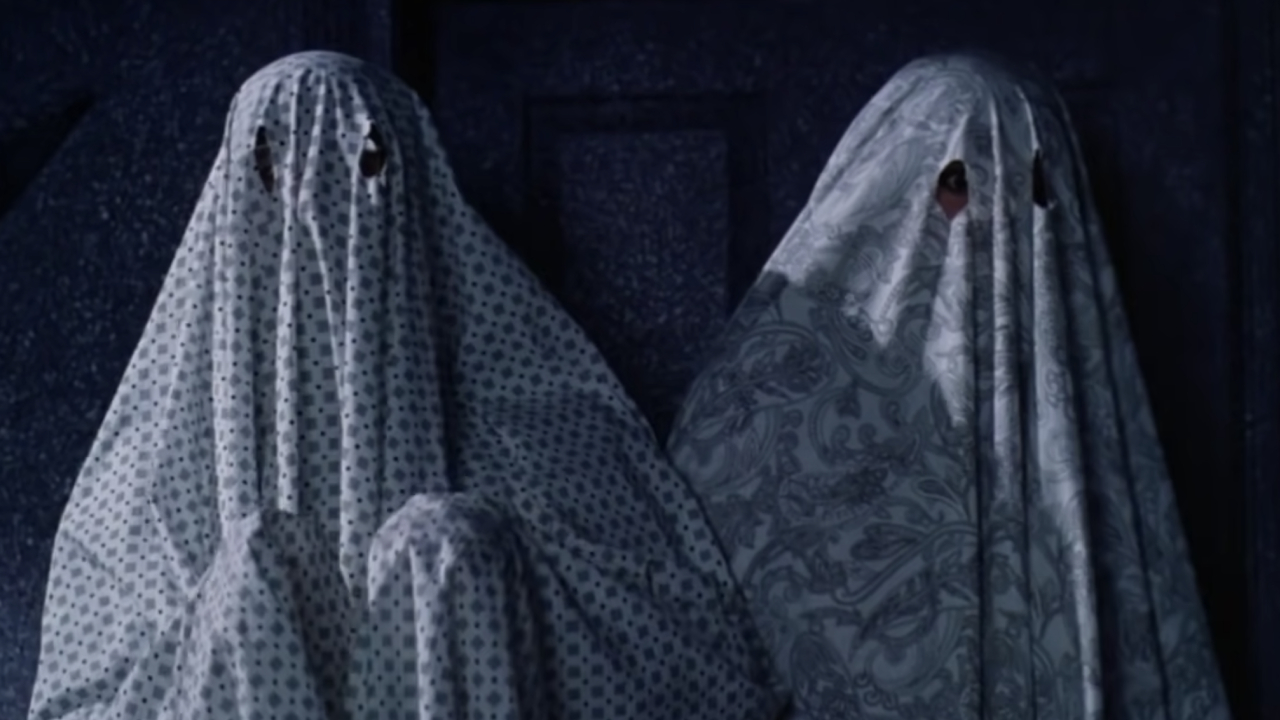
Tim Burton’s Sarcastic Suggestion For An Alternate Title Almost Replaced “Beetlejuice”
A passage from Tim Burton: A Child’s Garden of Nightmares - a biography about the filmmaker penned by Paul A. Woods - uncovers a moment when Warner Bros. executives suggested House Ghosts as a more marketable title for the film than Beetlejuice. As a joke, Burton replied, “Why don’t we call it Scared Sheetless?” only to realize, much to his horror, that they found the punny title worth considering. Luckily, Beetlejuice would up winning that battle, but there was another person from the Beetlejuice cast who had his own concerns about the film’s potential.
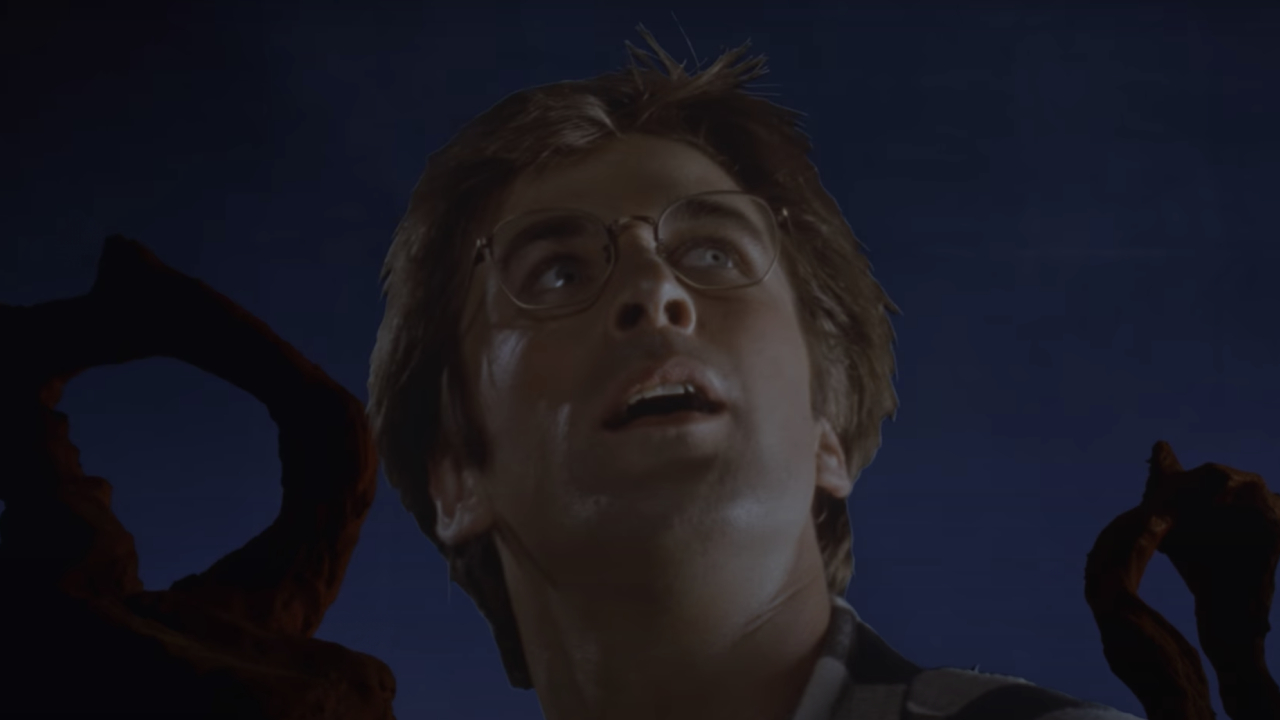
Alec Baldwin Feared Beetlejuice Would Be Bad For His Career
Academy Award nominee and Alec Baldwin has had a fantastic career, from his biting monologue in Glengarry Glen Ross to his twice Emmy-winning tenure in the 30 Rock cast, and, of course, his countless Saturday Night Live hosting gigs and hilarious random appearances. However, when the subject turned to Beetlejuice during his own personal review of his career for GQ, he had this to say:
When we did Beetlejuice, I had no idea what it was about. I thought my, all of our, careers are going to end with the release of this film. Maybe we're all going to be dead.
In the video, Baldwin recalls the one thing that gave him hope about the film was the performance of his co-star, Michael Keaton, whom he describes as a “comedy Annie Oakley.” The doubts his “neurotic” 30-year-old self had about Beetlejuice are understandable when you consider how little experience he had making films at the time.
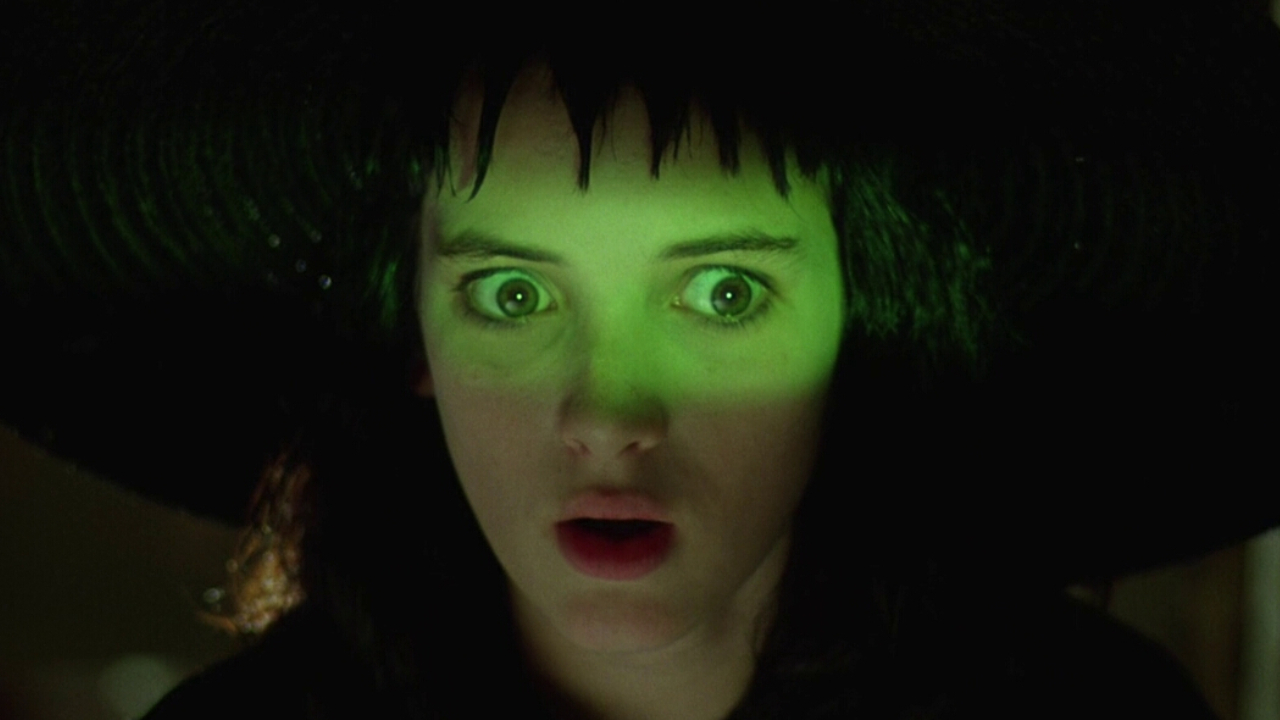
The Female Crowd At A Cure Concert Inspired The Lydia Deetz Character
Future two-time Academy Award nominee Winona Ryder also had very little experience making films when she starred in Beetlejuice as Lydia Deetz, who initially becomes the sole seer of the Maitland’s spirits when she moves into their house with her father (Jeffrey Jones) and stepmother (Schitt’s Creek cast member Catherine O’Hara). Her self-described “strange and unusual” personality and appearance was first dreamed up by co-writer Larry Wilson, who revealed in an oral history for CBC Radio that he found inspiration while seeing The Cure perform in concert. However, it was not the English goth band’s look that influenced the character’s creation, but the audience made up of mostly of young women whose rebellious attitude and sense of fashion really spoke to him.
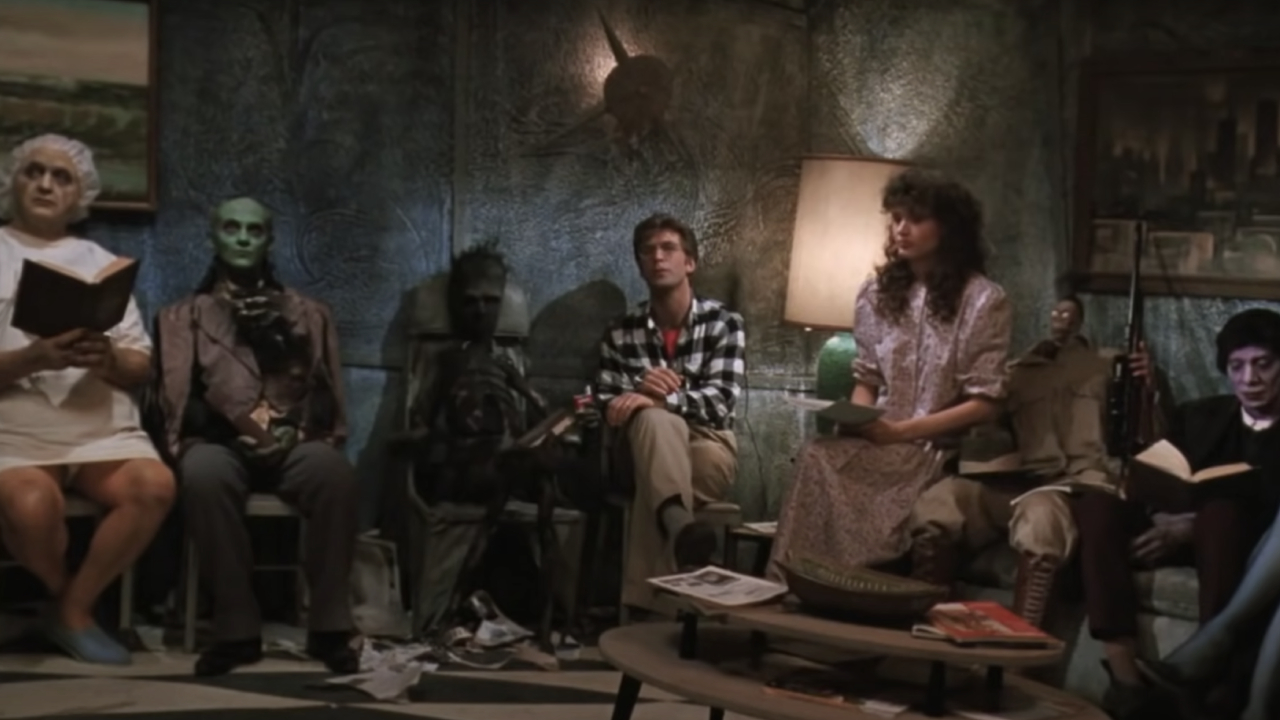
Michael Keaton Suggested Making The Afterlife A Dreary “Unemployment Office” Setting
In that same oral history for CBC Radio, which was also part of a radio show called q, hosted by Tom Power, Larry Wilson (who also wrote 1991’s The Addams Family) also talks about how they came up with the unique depiction of the hereafter as seen in Beetlejuice. Apparently, Michael Keaton also contributed to that distinct idea, saying that the afterlife should looks like some “unemployment office” that implements an “endless bureaucracy [from which] you’re never going to get what you need.”
This clever recommendation would lead to the creation of the creepy office setting where the Maitlands literally spend three months waiting to see someone, amid a who’s who of truly unfortunate souls.
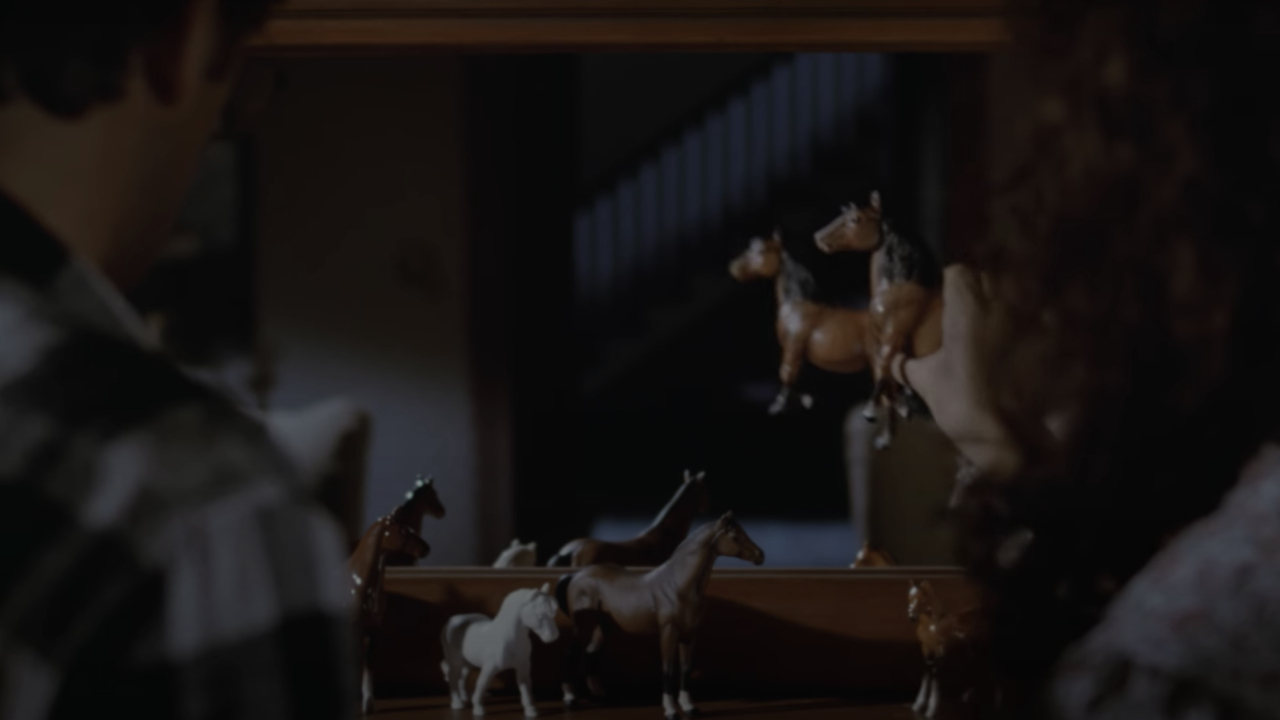
The Beetlejuice Crew Filmed As Many Practical, On-Camera Effects As Possible
The most amazing and fascinating aspects of those sequences in the office of the afterlife from Beetlejuice is that almost everything you see was filmed live on the set. In fact, as director of photography Tom Ackerman points out in a profile by Uproxx, most of the special effects you see in the movie were done practically as part of a rule ordered by Tim Burton to give the film a more old school, handcrafted feel to it. One definitive example of this is the famous “Day-O” scene, which was apparently a more complex and problem-ridden process than you might have expected.
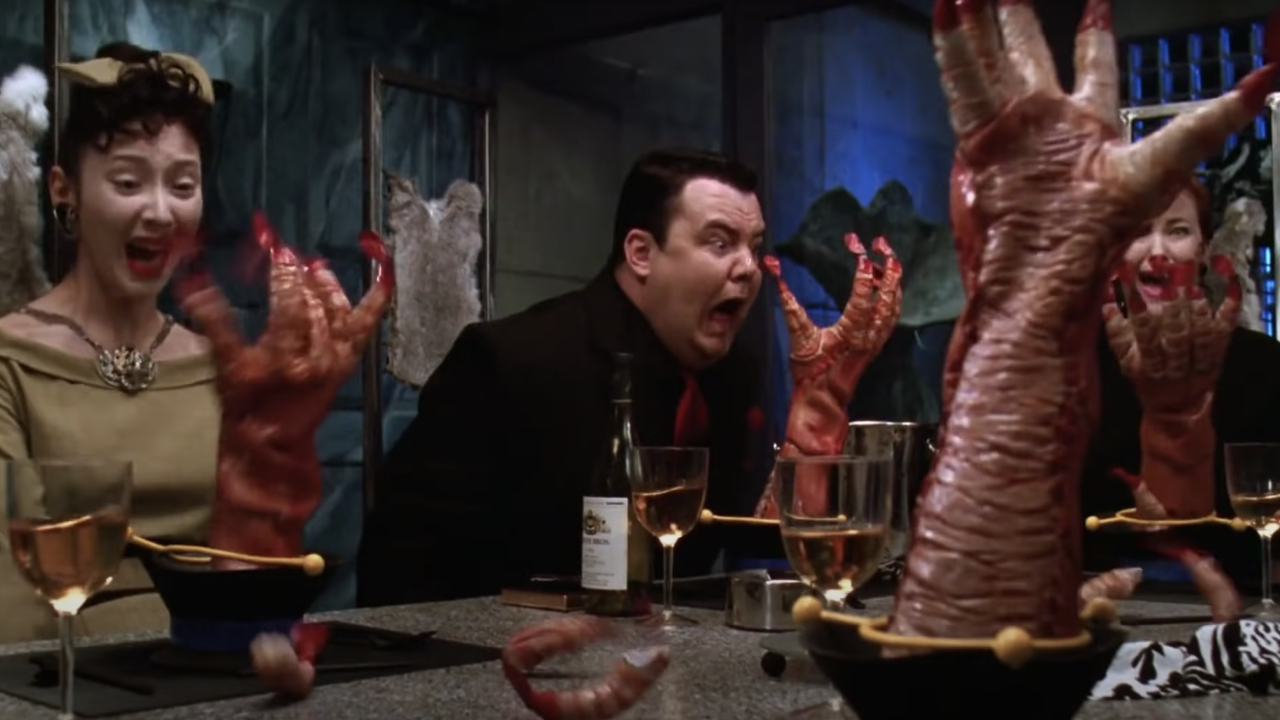
Dick Cavett Helped Alleviate Complications with Beetlejuice’s “Day-O” Scene
In the “Day-O” sequence, Charles Deetz and his wife, Delia, are having her agent, Bernard (Dick Cavett) and his wife, Grace (Susan Kellerman) over for dinner, at which point Adam and Barbara Maitland decide to enact a plan to frighten them out of the house that does not go exactly as planned. They possess the bunch into performing a dance number to the aforementioned Calypso hit by Harry Belafonte, which ends with their shrimp meals forming beastly hands that attack them, pushing them back.
In the following excerpt from an interview with Yahoo!, Cavett - a legendary, Emmy-winning talk show host - talks about an issue the filmmakers kept running into while filming the scene that he helped solve:
It's safe to say this, I think I made a contribution to the film. There was a scene at the table. My contribution had to do with the attacking shrimp. They kept shooting it, but the guys under there couldn't really see where their hand was going and they poked each other in the face. And there were minor injuries... what I recall is saying, 'Why don't you shoot it in reverse?'... I was hailed as a genius.
The next time you watch Beetlejuice and you get to the “Day-O” scene, keep in mind that when the shrimp hands come up to push the dinner guests’ faces, they are really pulling away from them.
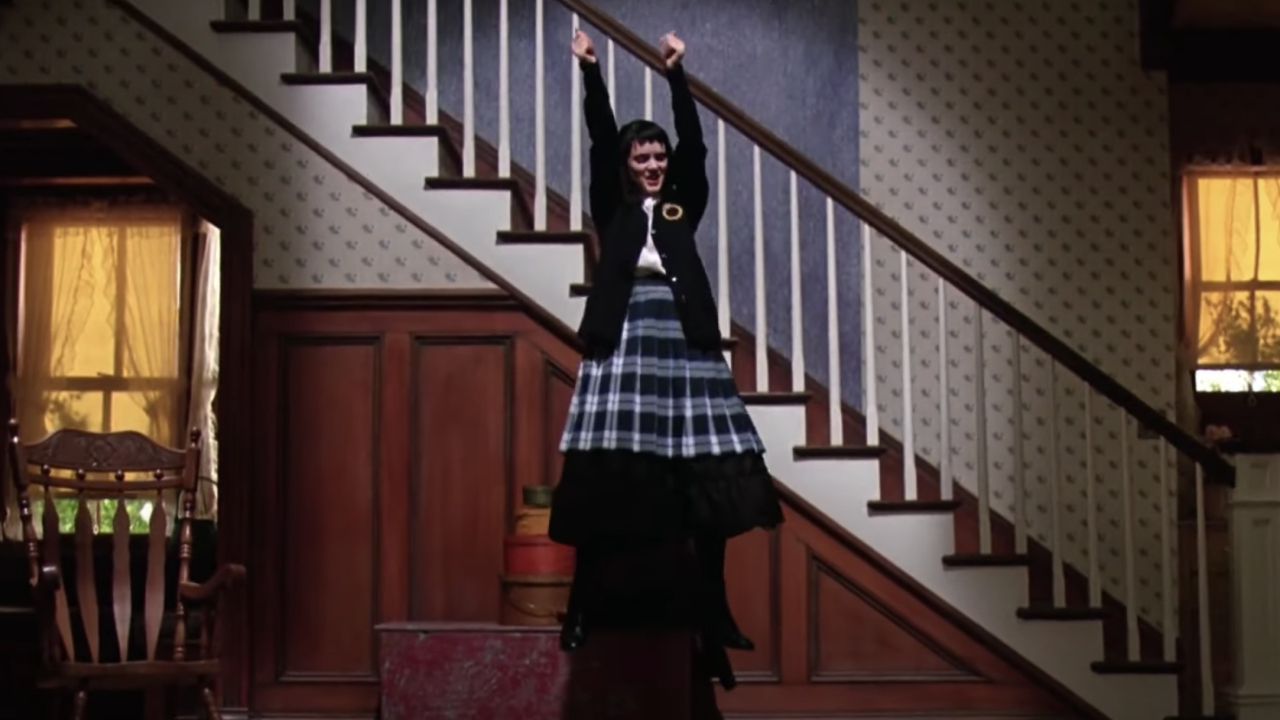
Lydia Deetz Died In The Original Beetlejuice Ending
Larry Wilson also spoke to Yahoo! about another much-needed improvement that was made to Beetlejuice, specifically the ending. As fans recall, the film concludes with Michael Keaton’s Betelgeuse defeated before he can marry Lydia, who enjoys her own Harry Belafonte dance number after the Maitlands and Deetzes agree to co-exist in the home. However, the screenwriter claims the script originally ended with Lydia perishing in a fire to spend the afterlife with Barbara and Adam, until others convinced them that such an ending might send the wrong message to younger audiences.
The movie’s upbeat ending and other crucial aspects are key as to why Beetlejuice may just be the most delightfully “strange and unusual” movie ever made in which death is a major theme.

Jason Wiese writes feature stories for CinemaBlend. His occupation results from years dreaming of a filmmaking career, settling on a "professional film fan" career, studying journalism at Lindenwood University in St. Charles, MO (where he served as Culture Editor for its student-run print and online publications), and a brief stint of reviewing movies for fun. He would later continue that side-hustle of film criticism on TikTok (@wiesewisdom), where he posts videos on a semi-weekly basis. Look for his name in almost any article about Batman.

